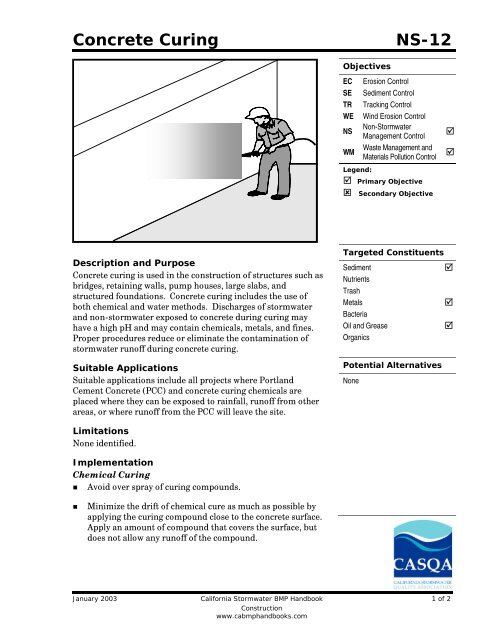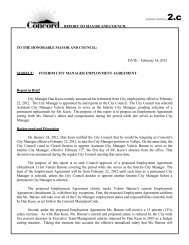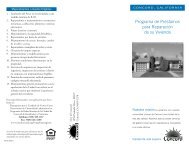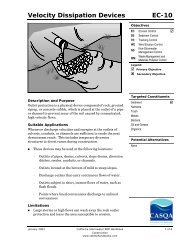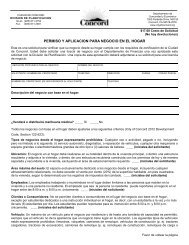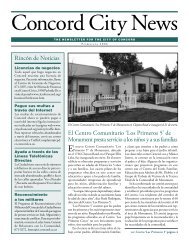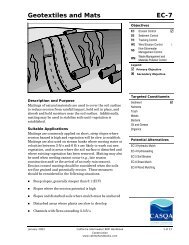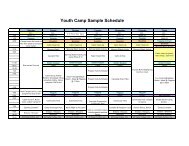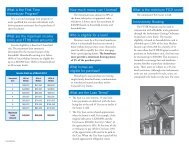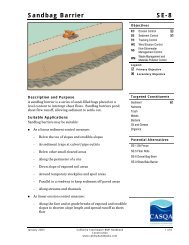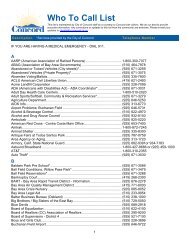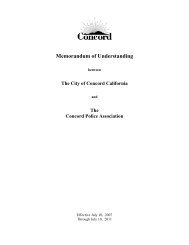Concrete Curing NS-12 - (BMP) Handbooks
Concrete Curing NS-12 - (BMP) Handbooks
Concrete Curing NS-12 - (BMP) Handbooks
Create successful ePaper yourself
Turn your PDF publications into a flip-book with our unique Google optimized e-Paper software.
<strong>Concrete</strong> <strong>Curing</strong><strong>NS</strong>-<strong>12</strong>ObjectivesECSETRWE<strong>NS</strong>WMErosion ControlSediment ControlTracking ControlWind Erosion ControlNon-StormwaterManagement ControlWaste Management andMaterials Pollution ControlLegend: Primary Objective Secondary ObjectiveDescription and Purpose<strong>Concrete</strong> curing is used in the construction of structures such asbridges, retaining walls, pump houses, large slabs, andstructured foundations. <strong>Concrete</strong> curing includes the use ofboth chemical and water methods. Discharges of stormwaterand non-stormwater exposed to concrete during curing mayhave a high pH and may contain chemicals, metals, and fines.Proper procedures reduce or eliminate the contamination ofstormwater runoff during concrete curing.Suitable ApplicationsSuitable applications include all projects where PortlandCement <strong>Concrete</strong> (PCC) and concrete curing chemicals areplaced where they can be exposed to rainfall, runoff from otherareas, or where runoff from the PCC will leave the site.Targeted ConstituentsSedimentNutrientsTrashMetalsBacteriaOil and GreaseOrganicsPotential AlternativesNoneLimitationsNone identified.ImplementationChemical <strong>Curing</strong>• Avoid over spray of curing compounds.• Minimize the drift of chemical cure as much as possible byapplying the curing compound close to the concrete surface.Apply an amount of compound that covers the surface, butdoes not allow any runoff of the compound.January 2003 California Stormwater <strong>BMP</strong> Handbook 1 of 2Constructionwww.cabmphandbooks.com
<strong>NS</strong>-<strong>12</strong><strong>Concrete</strong> <strong>Curing</strong>• Use proper storage and handling techniques for concrete curing compounds. Refer to WM-1, Material Delivery and Storage.• Protect drain inlets prior to the application of curing compounds.• Refer to WM-4, Spill Prevention and Control.Water <strong>Curing</strong> for Bridge Decks, Retaining Walls, and other Structures• Direct cure water away from inlets and watercourses to collection areas for infiltration orother means of removal in accordance with all applicable permits.• Collect cure water at the top of slopes and transport or dispose of water in a non-erodiblemanner. See EC-9 Earth Dikes and Drainage Swales, EC-10, Velocity Dissipation Devices,and EC-11, Slope Drains.• Utilize wet blankets or a similar method that maintains moisture while minimizing the useand possible discharge of water.CostsAll of the above measures are generally low cost.Inspection and Maintenance• Inspect and verify that activity-based <strong>BMP</strong>s are in place prior to the commencement ofassociated activities. While activities associated with the <strong>BMP</strong> are under way, inspect weeklyduring the rainy season and at two-week intervals in the non-rainy season to verifycontinued <strong>BMP</strong> implementation.• Inspect <strong>BMP</strong>s subject to non-stormwater discharges daily while non-stormwater dischargesoccur.• Ensure that employees and subcontractors implement appropriate measures for storage,handling, and use of curing compounds.• Inspect cure containers and spraying equipment for leaks.ReferencesBlue Print for a Clean Bay-Construction-Related Industries: Best Management Practices forStormwater Pollution Prevention; Santa Clara Valley Non Point Source Pollution ControlProgram, 1992.Stormwater Quality <strong>Handbooks</strong> - Construction Site Best Management Practices (<strong>BMP</strong>s) Manual,State of California Department of Transportation (Caltrans), November 2000.Stormwater Management for Construction Activities, Developing Pollution Prevention Plansand Best Management Practices, EPA 832-R-92005; USEPA, April 1992.2 of 2 California Stormwater <strong>BMP</strong> Handbook January 2003Constructionwww.cabmphandbooks.com


